

Repetition
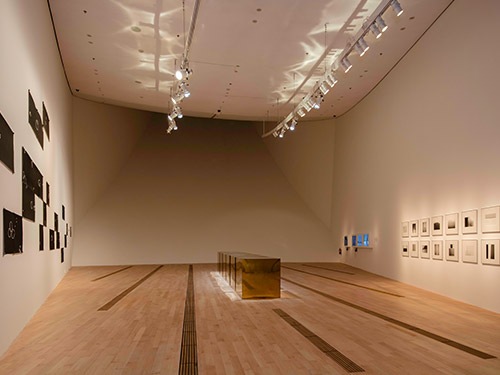

At the high point of Minimalism in America in the 1950s and 1960s art critics and curators established a set of rules that they then applied in order to determine if something could be considered Minimalist or not. The use of simple geometric forms, basic materials, a limited colour palette and repetition were all important factors.
Repeated elements, such as identical sculptural objects, were often placed directly onto the floor, without the need for plinths or showcases. As shown in this gallery, the use of repetition could be found in other mediums, such as printmaking and photography where the artist explores simple shapes, volumes and lines. Repetition could be found in performance too, with dancers abandoning traditional technique to concentrate on repeated natural movements that they developed into a unique movement vocabulary.
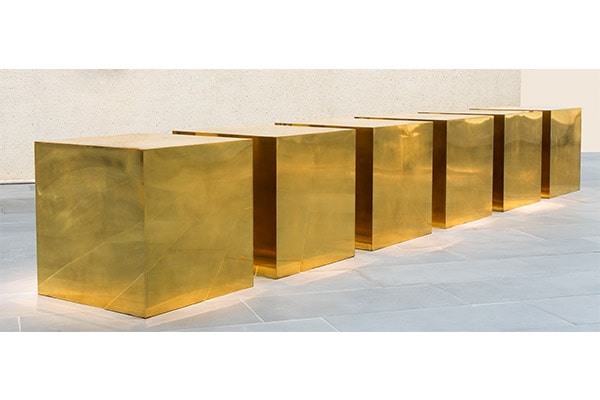
Untitled (Six Boxes) by Donald Judd (1974)
Brass
Installation: 101.6 x 736.6 x 101.6 cm;
Donald Judd is of the most important artists of American Minimalism. His work epitomises Minimalism in terms of the use of bare materials, simple forms and repetition. This sculpture, one of Judd’s most important works, is composed of six identical brass boxes spaced precisely 15 cm apart. By using repeated simple forms, the artist creates a visual rhythm in the gallery and encourages viewers to walk past and around the object. The slightly reflective surface of the sculpture shows a shadow of the body as the viewer walks by and hints at the space in which the sculpture sits. Having abandoned the need for a plinth, the work modifies the architecture in which it is positioned and challenges visitors to consider the sculpture in relation the gallery space.
Several other sculptures by Judd are on view at National Gallery of Singapore.

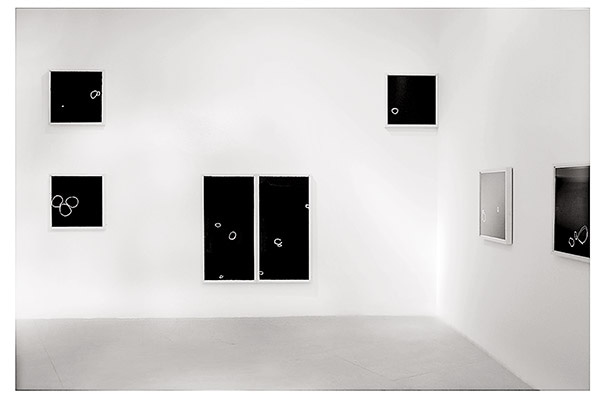
60 x 60 by Tan Ping (2010)
Woodcuts on paper
14 pieces, 60 x 60 cm (each); 6 pieces, 60 x 120 cm (each); 2 pieces, 60 x 180 cm (each)
Tan Ping is one of the leading figures in Chinese Maximalism. Like many Chinese Maximalist artists, he often takes a deeply spiritual approach to art-making. Whilst making the woodcut prints on show in this gallery, Tan Ping recorded feeling as though he was walking in fathomless water, that the black areas in the composition were not merely a plane but a deep space. He felt there was an infinity existing between the black plane and the white lines carved into it referencing nothingness and the ‘void’ — both themes that are repeated throughout this exhibition.18.
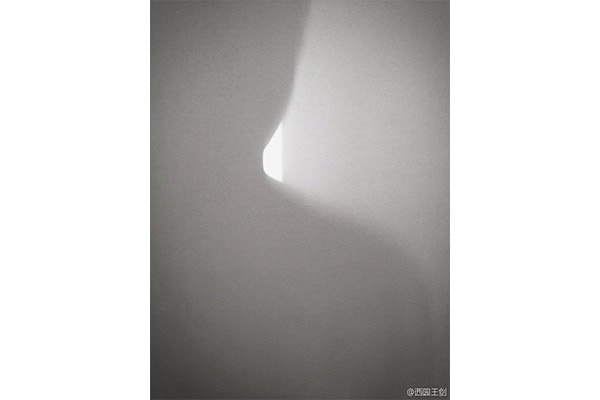
Various by Wang Jian (2009)
Giclée print on archival paper
30 x 22.5 cm
The abstract and minimal artwork of contemporary artist, Wang Jian draws from Eastern philosophies, Chinese Maximalism, and Western influences. Echoing the repetition apparent in Minimalist art from the 1960s, he takes hundreds of photographs as he goes about his daily life. The unassuming beauty of simple actions and the everyday are his inspiration. His photographs capture moments in time such as a shadow, the way that light spills from a window onto a smooth wall, the curve of someone’s neck as it falls to the shoulder or a bare window in the side of a blank wall. Wang Jian’s recurring ritual of photographing his daily life produces seemingly simple images that articulate the sublime in the mundane.

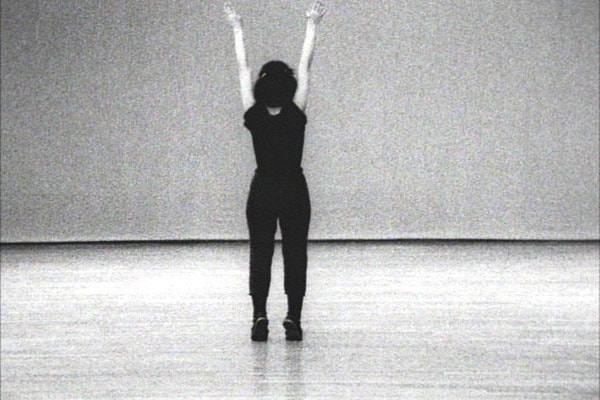
Minimalist Performance
As well as being a trend in visual art, Minimalism had a deep impact on the performing arts, including music and dance. In the 1960s, several dancers began employing pared back approaches, abandoning traditional dance techniques. Minimalist dance pioneers such as Anna Halprin, Yvonne Rainer, and Simone Forti reacted against the established forms of dance at the time, best represented by choreographer, Martha Graham. Her style was technical, expressive and narrative - all things that Minimalist dancers would go on to reject. Instead they developed an approach to dance that focused on basic, often naturalistic movements. Many important dance works of the 1960s were staged at Judson Dance Theater, established by Yvonne Rainer, Trisha Brown and others in 1962. It became a highly influential space that served that as a testing ground for the development of Minimalist dance, and a forum for the work of many famous artists including Robert Rauschenberg, Robert Morris and Andy Warhol.
The works on view are:
- Trio A by Yvonne Rainer (1966/1978)
- Wind by Joan Jonas (1968)
- Solo No. 1 by Simone Forti (1974)
- Excerpt on Anna Halprin from the documentary, Artists in Exile: A Story of Modern Dance in San Francisco by Austin Forbord and Shelley Trott (2000)